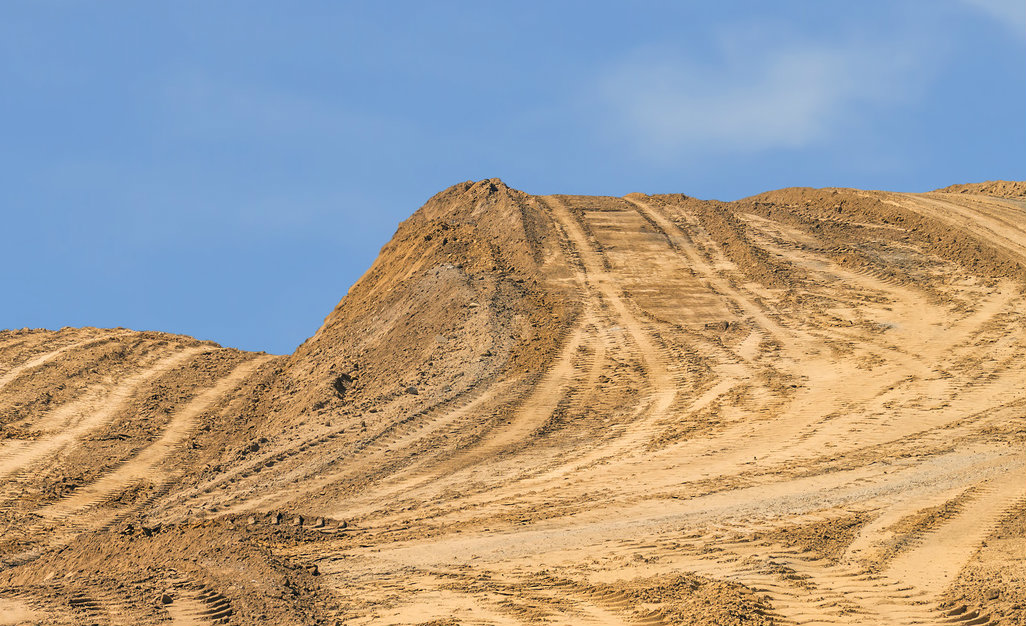
Soil resistivity testing is performed for a variety of important applications, including:
- Testing grounding grids: Grounding grids are primarily used in industrial settings—like electrical substations—where expensive machinery needs to be protected. The U.S. National Electric Code sets forth that every substation must have at least one grounding rod to protect equipment from lightning damage and to ensure that a stray current from the neutral doesn’t electrocute a person nearby.
- Cathodic protection: Cathodic protection is a way to protect underground or underwater steel infrastructures like pipelines from rusting. There are two types: passive protection and impressed current cathodic protection (ICCP). Passive cathodic protection involves attaching a metal anode (often made of zinc) to the structure, as it will corrode instead of the protected structure. The ICCP method is more complex and involves the use an injected direct current (DC) into the ground through a buried grounding structure (also called the anode). The current travels from the anode through the ground to the protected structure (i.e. a pipeline or tank), thereby protecting it. Before you can design your cathodic protection, you must perform a soil resistivity test to see what kind of cathodic protection is called for. If the ICCP system is needed, you can use the soil resistivity testing results to design the system accordingly.
There are two manual soil resistivity testing techniques often employed by geotechnical engineers to handle these types of applications: ASTM G57 and IEEE fall-of-potential (FOP). Below, we’re providing an in-depth description of each. We’re also discussing how the SuperSting electrical resistivity instrument can be used for automatic soil resistivity testing.
1. ASTM G57
Also known as the four-pin Wenner method, the ASTM G57 standard is performed by geotechnical engineers who want to find out the properties of the ground and soil. ASTM G57 is similar to vertical electrical sounding (VES), but instead of using Schlumberger electrode array, you use the Wenner electrode array.
Here’s how ASTM G57 is conducted for soil resistivity testing:
-
- Pick a center point and place your four electrodes around it. The electrodes should be placed in line and with equal spacing “a” between them.The electrodes are called A, M, N, and B, and the center point will be midway between electrodes M and N.
- A predetermined set of “a” spacings is used. For example for a=2, the A electrode is placed at 3 feet from the center point, the M electrode at 1 foot from the center point, N is on the other side of the center point and at -1 foot and finally the B electrode is at -3 feet.
- A measurement is taken for each predetermined a-spacing. Before each measurement all four electrodes needs to be moved to the new location. This means a lot of walking when the a-spacing becomes large.
- The A, M, N, and B electrodes are kept equally apart (the “a” spacing) from one another. This sets ASTM G57 apart from vertical electrical sounding (VES), which uses Schlumberger arrays. This expands the A and B electrodes outwards for each reading and leaves the M and N electrodes in the same place for most readings. When the voltage signal between M and N becomes too low to measure, the M and N will be expanded outwards.
- Each time you stop, take a measurement and graph it using a logarithmic X-Y plot (where the X axis is A/B distance divided by two and the Y axis is apparent resistivity).
- As the electrodes expand, you’ll be exploring deeper into the formation. The larger the A to B distance becomes, the deeper in the ground you’ll be able to look. Both the four pin Wenner measurements and the VES measurements can easily be interpreted using the EarthImager 1D software
2. IEEE 81-2012 Fall-Of-Potential (FOP)
When a grounding system is installed, it can be tested using the Institute of Electrical and Electronics Engineers (IEEE) fall-of-potential method. These are the steps of an IEEE FOP test:
- Disconnect the grounding system from the substation equipment. This is important so you get an accurate measurement (and don’t damage any machinery during the survey).
- For a fall-of-potential grounding test, you’ll use four electrodes—two current electrodes and two potential electrodes. The grounding system will act as the A and M electrode simultaneously. Connect one current (A) and one potential (M ) terminal on the instrument to the grounding system. As an alternative the A and M electrodes could be shorted together at the instrument, so that only one wire connects the instrument to the grounding system.
- Place the other current electrode, B, away from the grounding system—at least 5 times the the size of the grounding system. For example if the grounding system is a 3 meter vertical rod, place the B electrode 15 meter away from the grounding rod. Connect the B electrode to the instruments B terminal.
- Take the final potential electrode N, the probing electrode, and measure at even intervals along the line between your grounding point and current survey injection point, electrode B.
- Gather the data and plot Voltage/current versus distance from the grounding point into a curve graph. Find the flat horizontal part of the curve, which will tell you the grounding resistance value.
3. An Automatic Soil Resistivity Test
Both ASTM G57 and IEEE 81 FOP are manual, hands-on soil resistivity testing techniques. When you perform a soil test to check for how well a grounding grid is performing or how your cathodic protection system needs to be designed, you have to spend a great deal of time and and effort doing so.
But if you need to conduct a soil resistivity test, using an automated electrical resistivity survey is an effective way to indicate resistivity value and provide you with additional pertinent information.
AGI’s SuperSting tools and EarthImager modeling software make this soil resistivity test a breeze. All you have to do is:
- Place a number of electrode stakes (28, 56, 84 or 112) at even interval along the survey line.
- Lay a multi-electrode cable along the stake line and attach each stake to a cable take-out.
- Attach the SuperSting instrument to the multi-electrode cable.
- Scan the electrodes for contact resistance. Improve the contact resistance by adding salty water to the ground at the stake if necessary.
- Start the SuperSting instrument to perform the soil resistivity scan.
- Download the data at the end of the scan and process with the EarthImager 2D to create a visual cross section of the ground. This image describes the resistivity at different depths along the survey line.
Advanced Geosciences Inc. (AGI) is the leading developer and manufacturer of geophysical imaging systems. Since 1989, we’ve been producing state-of-the-art electrical resistivity meters and products for induced polarization (IP) imaging. If you conduct your electrical resistivity survey using an AGI imaging system, our staff will be there to help you from start to finish with free technical support.
Ready to discuss your project?

